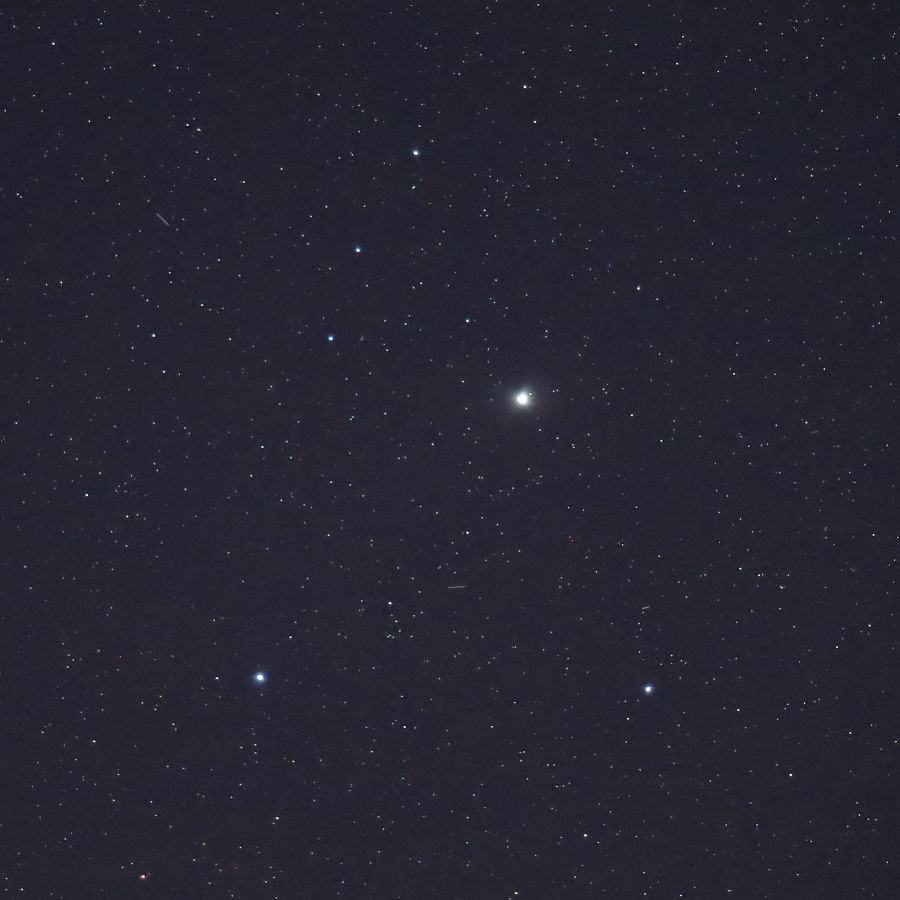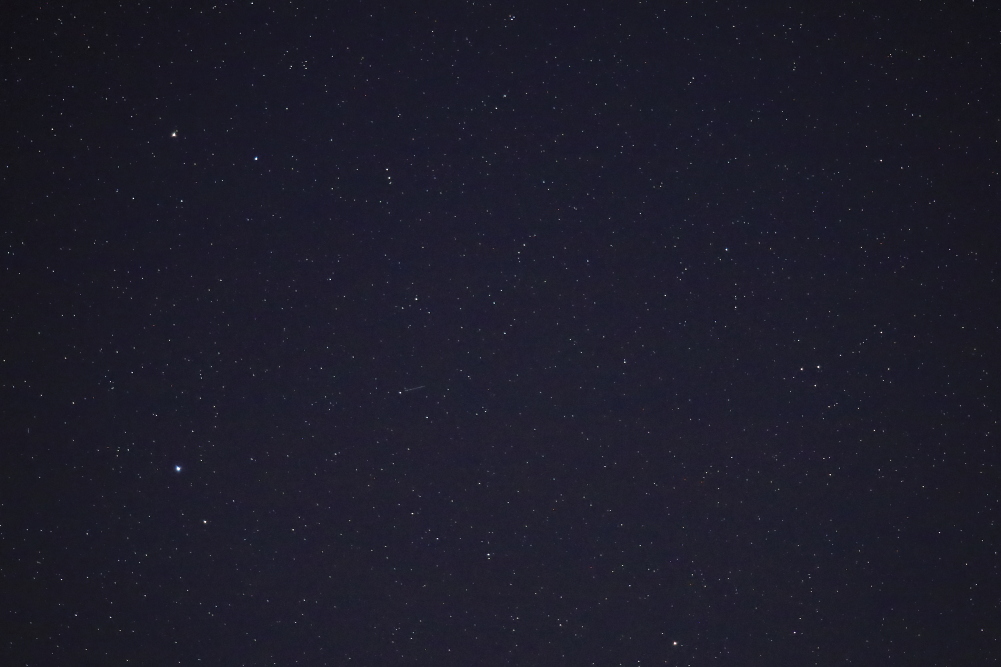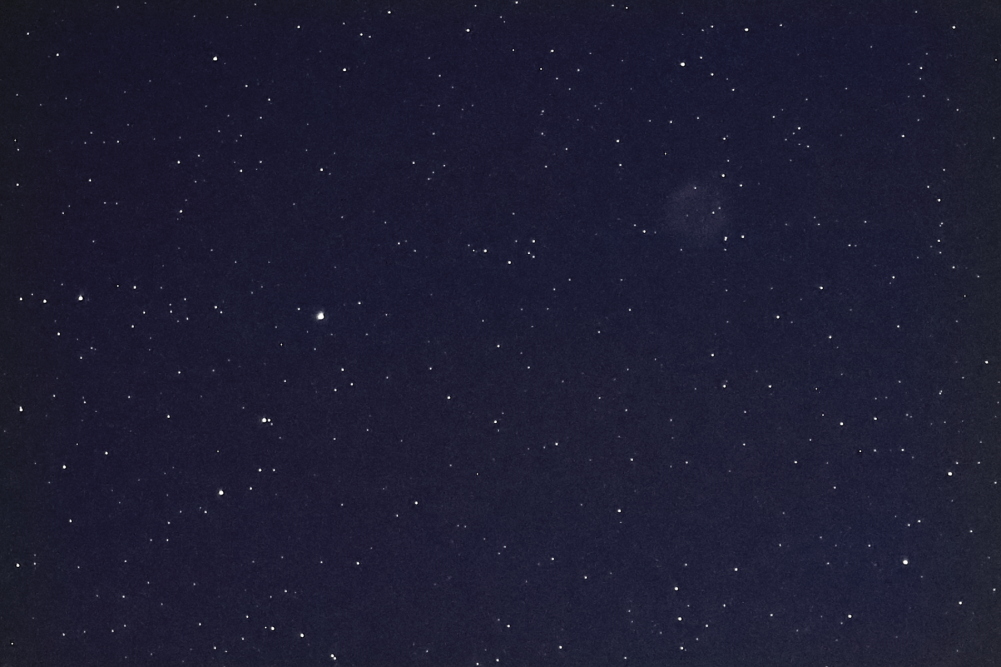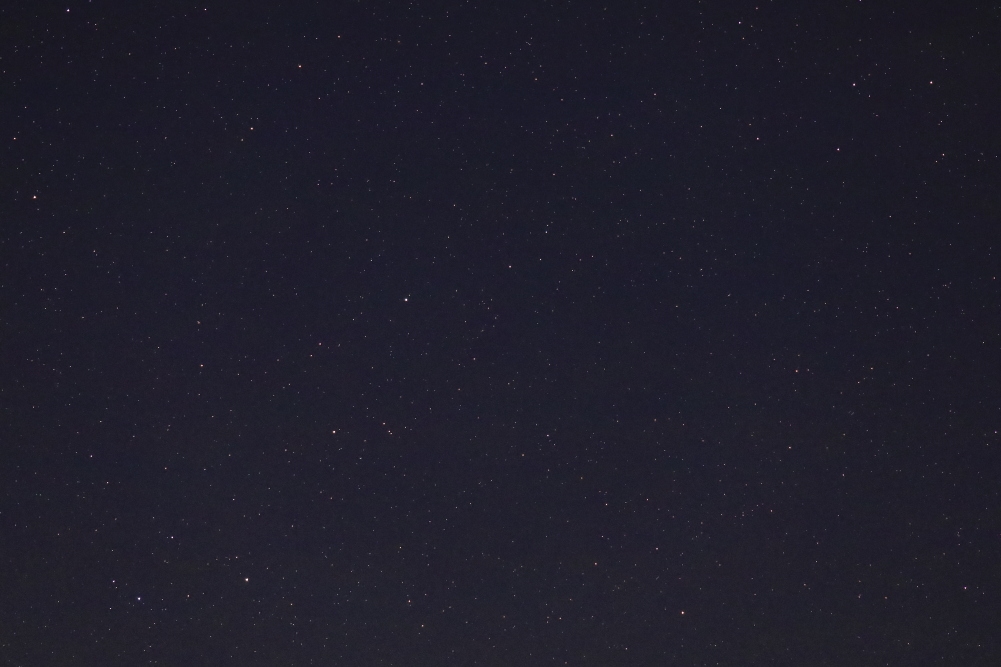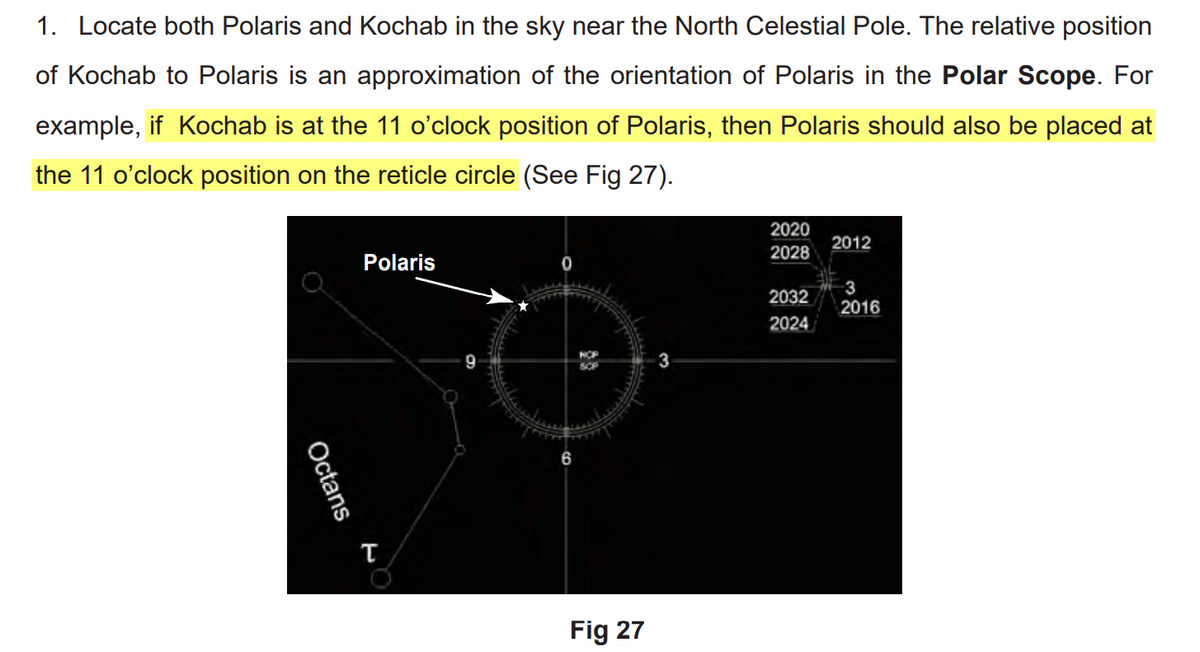Sky-Watcher Star Adventurer Mount Testing
Wharton State Forest, New Jersey
Joe Stieber,
August 2-3, 2022
I arrived at the field about 11:40 pm EDT and left about 1:25 am. The sky was cloud-free, but transparency was perhaps 3 to 4 on a scale of 1 to 5. It was warm and somewhat muggy (humid) although there only the slightest dew formation by time I left. Mosquitoes were a mild nuisance.
All pictures here were captured with a Canon EOS RP DSLM (digital single lens mirrorless) "full frame" camera and a Canon 200 mm F/2.8L EF lens (via a Canon EF to RF lens mount adapter) tracking on a Star Adventurer motor-driven equatorial mount (no guiding). The camera was connected via a ball head. Earlier that day, I had re-adjusted the reticle in the mount's polar alignment scope to match the relative positions of the North Celestial Pole and Polaris as shown by SkyTools and SkySafari. The manual for the mount was unclear about the relative position (see excerpt at the bottom of the page), so I wanted to test my settings in the field. Visually as I set up, the SkyTools and SkySafari positions of Polaris and the Little Dipper (and hence the invisible pole) matched the actual sky (no surprise there).
I used the same exposure time for all the pictures here, a not-too-demanding 8 seconds. On a fixed tripod, my experience with this camera and lens combination has shown that 2 seconds is a safe maximum, perhaps 4 seconds depending on the sky location and the degree of subsequent cropping to be used. All were shot with the lens wide open at f/2.8 while focusing was accomplished using 10x live view. Color temperature was set to 4200K for the JPEG capture, but as seen here, all were single RAW frames concurrently captured, subsequently applying minimal processing to them with Canon's Digital Photo Professional 4. The ISO setting varied from 3200 to 6400 and they were each cropped to different degrees, both of these settings are noted in the captions.
I also took ten (10) frames of each at the indicated settings using the camera's built-in intervalometer. At some point, I may try stacking the images to improve their quality, but that's a bridge I haven't crossed yet. I also intend to try longer exposures and/or longer focal lengths to determine the points at which the mount becomes unsuitable. Keep in mind that I'm not an astro-photographer, I just take celestial snapshots.
The images are nominally north up and east to the left. Mouseover for Labels.
Saturn at the Tail of Capricornus
Taken at 12:58 am EDT on August 3, 2022, ISO 3200. Saturn, Deneb Agedi and Nashira in Capricornus now form a compact, nearly equilateral triangle to unaided eyes. They, along with 42, 44 and 45 Capricorni are all easily visible in the same field of most binoculars, and its a lovely sight. Saturn will continue to move westward in retrograde motion (to the right in this north-up image) until it's stationary on October 23 (almost 4° west of Nashira) when direct (eastward) motion resumes. This image was cropped to 38% of the width x 58% of the height of the original linear dimensions, yielding a 4.0° square. Several short satellite trails are visible too. The parenthetical value after the objet designation on mouseover is the magnitude for the object (decimal points omitted for stars).
Asteroid (4) Vesta
Taken at 1:01 am EDT on August 3, 2022, ISO 3200. The asteroid/minor planet (4) Vesta was in the constellation Aquarius and was easily seen in binoculars at magnitude 6.2, slightly dimmer than the nominal magnitude 6 threshold for unaided eyes. It will reach opposition on August 22 at magnitude 5.9, just visible with keen eyes from a dark site. It will be in retrograde motion until October 7. This image was cropped to 72% of the original linear dimensions (with no change to the native 3:2 aspect ratio) for a field 7.4° wide x 5.0° high,
The Helix Nebula
Taken at
